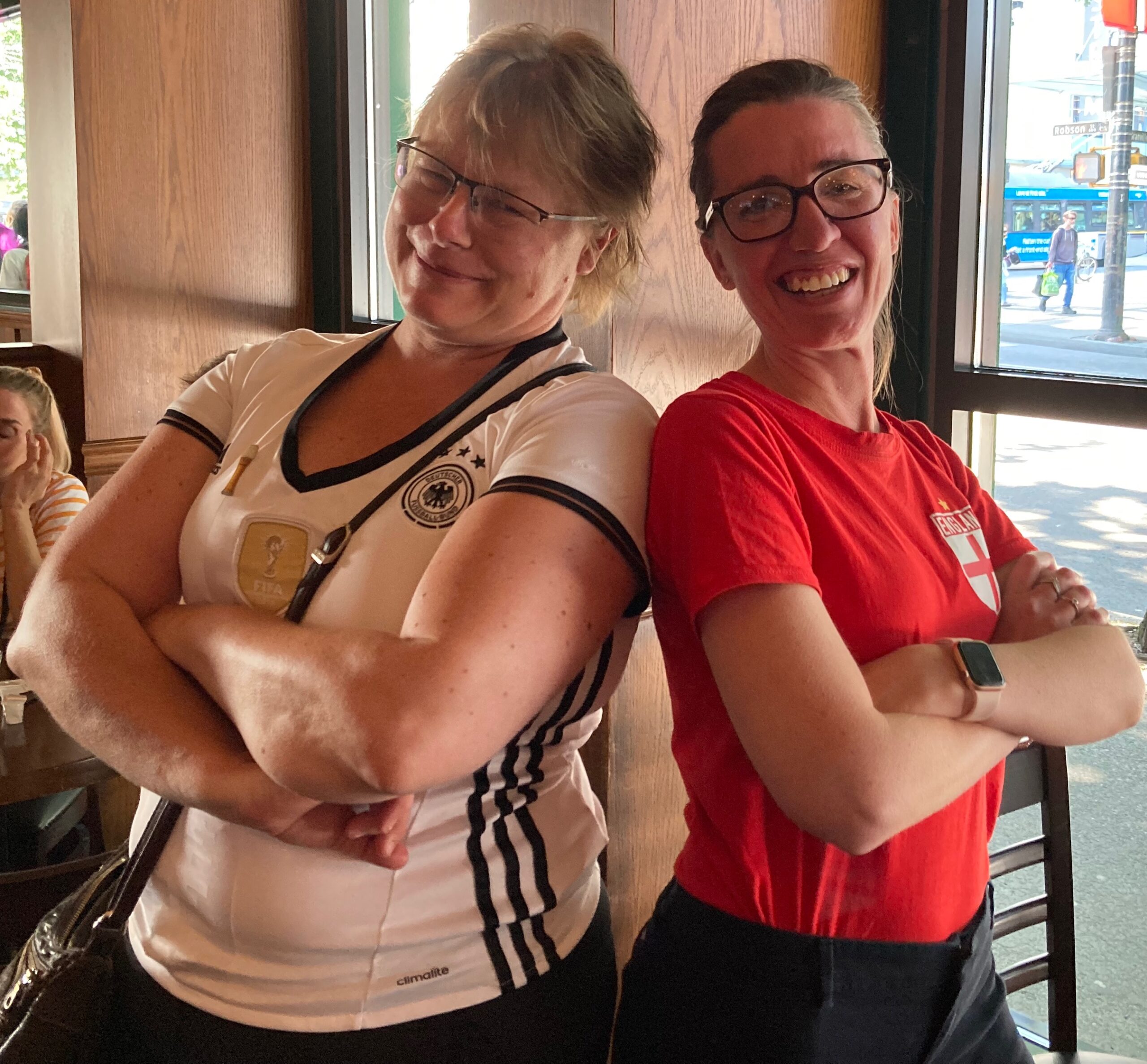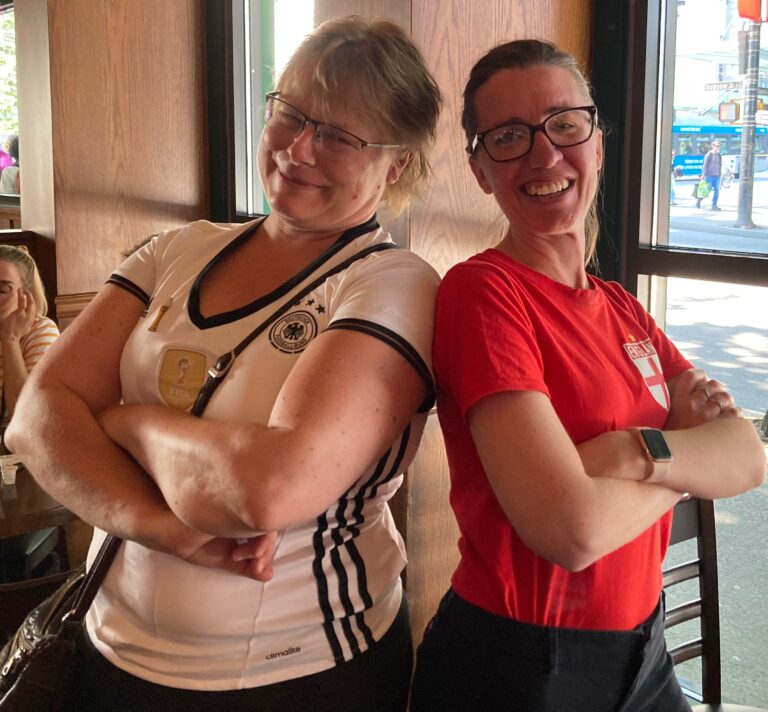
Vancouver, July 31, 2022 – Today, in spite of record-breaking heat, around 40 people showed up at the Lennox Pub at 8:30 am on Sunday to watch the Women’s Final Match between Germany and England in the official “EnglandHouse”. As a representative of Westcoast German News and a lone fan of the German team, it felt like I was “living on the edge.” It was almost a relief when the England Women scored the first goal, and ultimately, won the game. ENGLAND ARE NOW EURO 2022 CHAMPIONS!
The first half of the game was a lot of kicking, but not a lot of scoring and there was still hope.
The second half of the game showed good work by both goalies and Coaches: Martina Voss-Tecklenburg & Merle Frohms on the German side and Mary Earps & Sarina Wiegman on the English side.
FIRST GOAL
This photo shows the bar of the Lennox Pub with English fans that were very excited when Elle Toone – England – scored a goal in the 62nd minute. I just missed getting a shot of the giant roar that went up from the crowd.
Then I learned what the sound of silence was. That was when Lina Magull – Germany scored a goal in the 80th minute.
Finally, in the 110th min – Chloe Kelly – England scored the goal that won the game.
In the end, the Lennox Pub was alive with clapping, cheering, singing and hollering.
Celebrating anyways
Here is what I waited to do until I got home: Germany made it into the finals and they also scored a goal! Hurrah!
The Final Match was held at Wembley Stadium
Home team: England
Capacity: 89,000
- The modern Wembley opened in 2007
- The largest sports venue in the UK and the second-largest stadium in Europe
- In addition to the FA Cup final, Wembley today hosts the FA Community Shield, the League Cup final, the FA Cup semi-finals, the Football League Trophy, the Football league play-offs, the FA Trophy, the FA Vase and the National League play-offs
- With a 1 km circumference and a volume of 4,000,000 cubic metres, the stadium can fit 25,000 double-decker buses inside; Alternatively, you could fill the new Wembley with seven billion pints of beer. Or pints of anything I guess.
- Testament to the size of the thing is how many toilets you’ll find at Wembley Stadium. There are 2,618 toilets in total
Women and Soccer Competitions
Why I mentioning this here is because I got into a talk with a women in the ladies room about what it\’s like to support a women’s team vs. a men’s team. Places like the Vancouver Alpen Club, for example, are most likely going to support the FIFA World Cup played by men, to be held in November & December later on this year, but did not open for the women’s games. I sat next to a soccer fan family from Langley who had driven all that way to downtown Vancouver to find a pub open at 8:30 am on a Sunday morning, so they could watch the game with other England fans. Most of my social media channels made no mention of the women’s game and the German Language Meetup Group did not seem to have an event set up to watch the Women’s game(s) together.
My bathroom companion, an English fan, explained that a lot of discrepancy comes from funding and sponsorship’s. “There is still more work to be done” we both agreed.
EUFA.com Website – History of Women’s Football
The Monte Carlo Extraordinary EUFA Congress in June 1971 adopted the following resolution: \”The Extraordinary Congress of UEFA requests the Executive Committee to examine the question of women\’s football in detail and to take the necessary measures in order to ensure its uniform organization in all member associations. The UEFA member associations agree to take charge of the control of women\’s football in their countries, and they require that international matches, competitions, and tournaments be exclusively controlled by the international football authorities, FIFA and UEFA, respectively.\”
A committee dealing with women’s football was set up and tasked with drafting a set of guidelines on women’s football structures and standardization, given the amount of variation from one country to the next in areas as fundamental as the size of the ball and the length of matches.
The newly established Executive Committee met in Zürich in March 1973 during a women’s football conference involving representatives of 11 UEFA member associations. A survey carried out before the conference, to which 23 national associations had responded, showed that 7 associations ran national women’s championships, and another 7 regional women’s leagues. The survey also revealed some support for the introduction of an international competition managed by UEFA, although some countries favoured the idea of a competition for national teams and others a competition for clubs.
The majority, however, thought it was still too early to launch any type of continental competition for women. The conference delegates unanimously agreed that regulating women’s football by placing it under the authority of the national associations remained the overriding priority.
To read more about this, please read this: https://www.uefa.com/womenseuro/news/026e-1394543e97e3-cdbd4893092f-1000–how-the-women-s-euro-was-born/?iv=true








